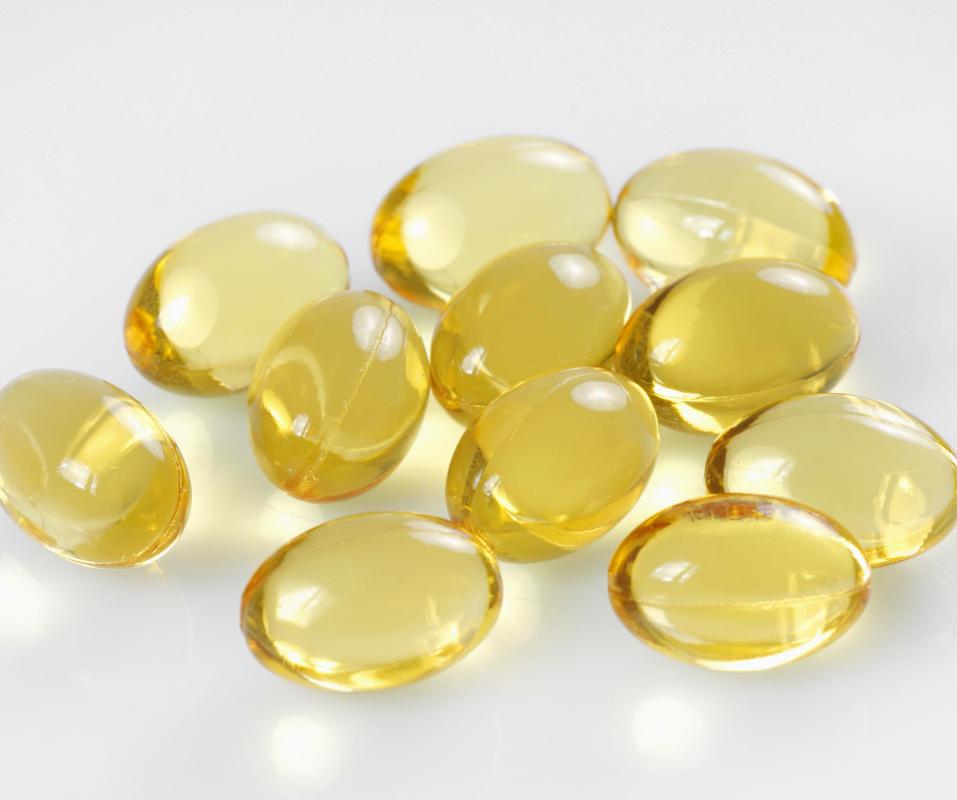At WiseGEEK, we're committed to delivering accurate, trustworthy information. Our expert-authored content is rigorously fact-checked and sourced from credible authorities. Discover how we uphold the highest standards in providing you with reliable knowledge.
What are the Best Vitamin D Deficiency Treatments?
Vitamin D, an essential vitamin the body needs to help with the absorption of calcium and the regulation of calcium and phosphorus, is often found in foods. Spending time in the sunshine also triggers the body to manufacture vitamin D as well. Most people need to consume 5 to 15 micrograms (mcg) of vitamin D each day, but many people do not meet that daily requirement, resulting in a deficiency that may cause rickets and osteoporosis. There are a range of vitamin D deficiency treatments, including dietary changes and supplements, as well as artificial and natural light therapy.
An easy way to treat this deficiency is to change the diet to include more vitamin D-rich foods. Dairy products like milk may be enriched with vitamin D, but many — like cheese, butter, yogurt and cream — are naturally high in this vitamin. Other foods high in vitamin D include fish, oysters, margarine and fortified cereals. As far as vitamin D deficiency treatments go, changing the diet may be a simple and effective option.

Including vitamin D supplements in a daily eating plan is also an easy way to get the daily recommended value of this important nutrient. Some experts believe that, because foods are enriched with vitamin D, supplementation may not be necessary. For people who cannot get enough vitamin D in their diet, however, supplementation may be a good option. People who do take a supplement should monitor their daily intake, however, as many experts recommend limiting vitamin D to less than 5,000 units per day to avoid health problems.

Another option for vitamin D deficiency treatments is spending time in the sunlight. This may not be easy for people who live in areas that do not receive a great deal of sunshine or experience a lot of cold weather. Studies have found, however, that just ten minutes in the sun may be enough produce 10,000 unites of vitamin D. Fair-skinned people produce more than dark-skinned individuals and the elderly. People who do spend time outside should be sure to take the necessary precautions to protect the skin from ultraviolet rays to avoid skin damage that may cause cancer, wrinkles or age spots.

Artificial sunlight vitamin D deficiency treatments, called phototherapy, may help the body produce vitamin D. Tanning bed manufacturers have made claims that use of these beds boosts vitamin D, but these claims are unproven. Other options include lamps for Seasonal Affective Disorder (SAD).
AS FEATURED ON:
AS FEATURED ON:















Discuss this Article
Post your comments